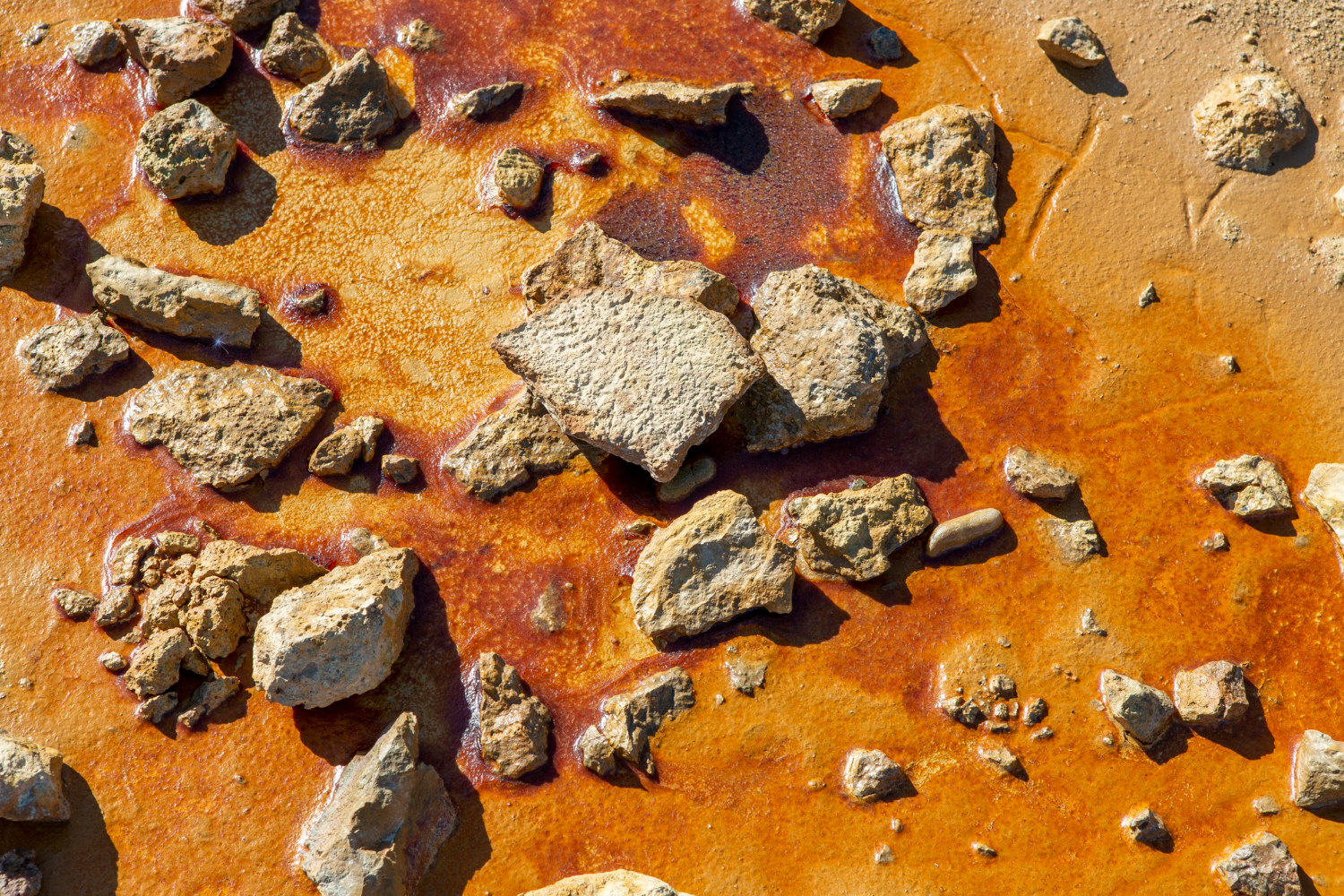Introduction:
The landscapes we admire—from grand mountain ranges to humble pebbles—are not static. They are constantly in flux, shaped and reshaped by the relentless forces of nature. While we think primarily of wind and water when considering erosion, there’s a subtler sculptor at work: chemical weathering.
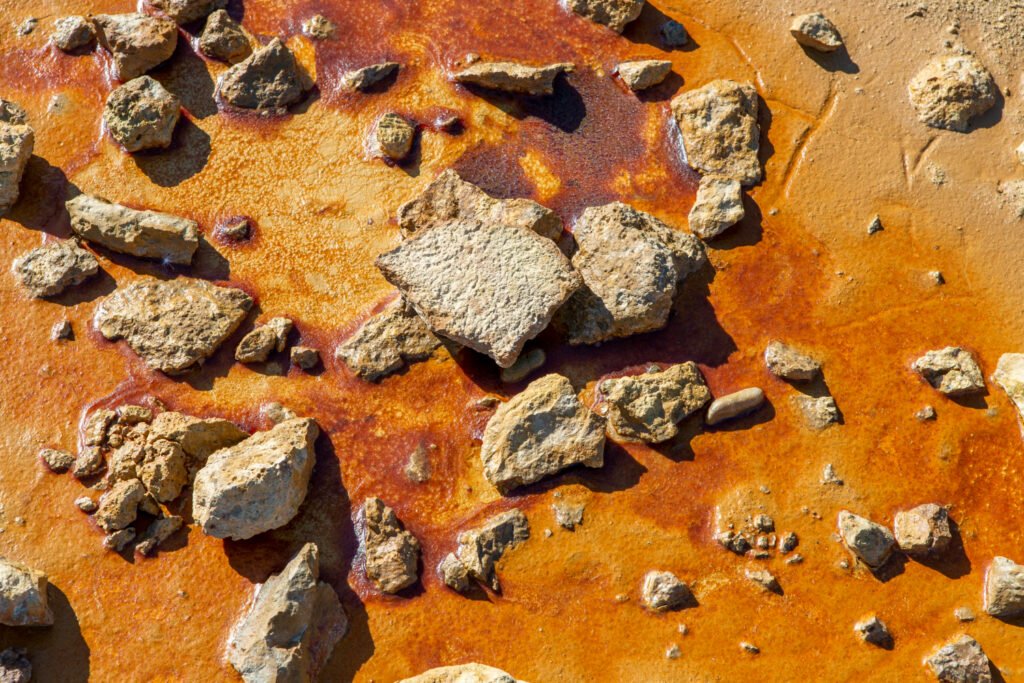
Chemical weathering, the alchemist of nature, silently performs its work. Chemical weathering wields gentle tools – water, acids, oxygen – yet its touch has sculpted continents and nourished the soil we walk on.
What is Chemical Weathering?
Chemical weathering is a process where the chemical composition of rocks and minerals is altered by exposure to external agents. It’s like a slow-motion chemical reaction between the Earth’s crust and the world around it. These reactions are primarily driven by water, dissolved atmospheric gases, and living organisms’ acids.
Key Agents of Chemical Weathering:
Water: As a solvent, it carries away dissolved materials. It also participates directly in reactions like hydrolysis.
Carbon Dioxide: Dissolves in water to form carbonic acid, which is particularly effective in breaking down limestone (think caves!).
Oxygen: Reacts with iron-bearing minerals in a process called oxidation, leading to rust and a weakening of rock structures.
Biological Acids: Organisms like lichens and certain bacteria excrete acids that can dissolve rock minerals to get nutrients.

Types of chemical Weathering:
Chemical weathering, the alchemist of nature, works its magic subtly, transforming rocks into new substances through a series of fascinating chemical reactions. Unlike physical weathering, which breaks down rocks purely by mechanical force, chemical weathering alters their makeup.
1. Carbonation:
Chemical weathering can be pretty artistic, too! Carbon dioxide, ever-present in the air, is a key ingredient in the alchemist’s recipe for dissolving limestone and marble. When carbon dioxide combines with water, it forms a weak acid called carbonic acid. This carbonic acid is particularly adept at dissolving calcium carbonate, the main component of limestone and marble.
This process forms breathtaking caves and mesmerizes sinkholes, sculpting the landscape with its dissolving touch.
Carbon dioxide dissolves in water:
CO₂ (g) + H₂O (l) ⇌ H₂CO₃ (aq)
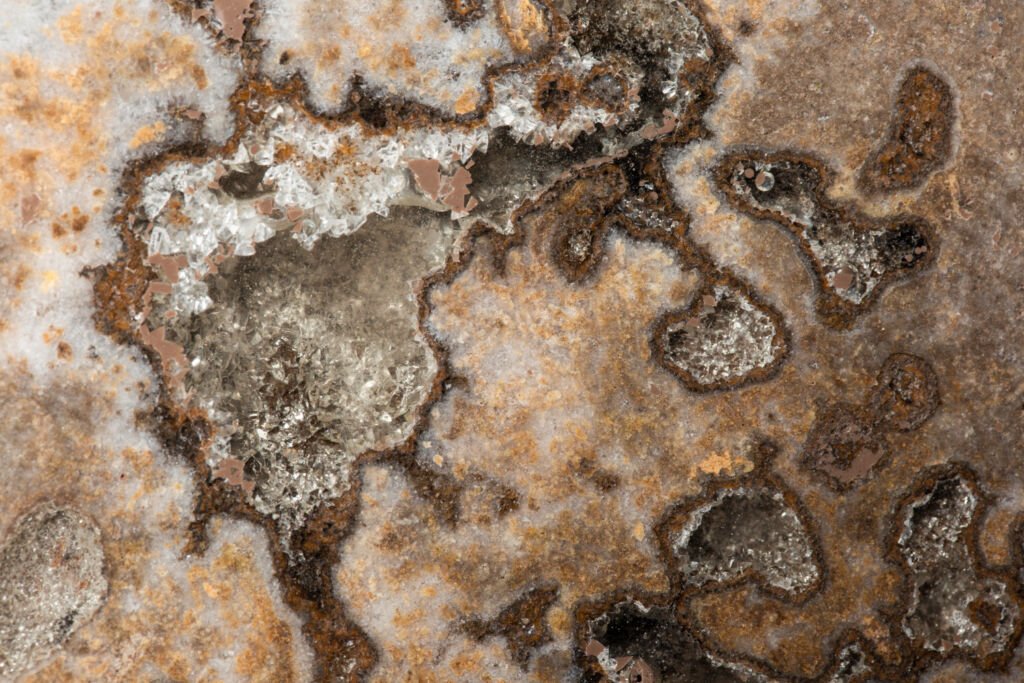
Carbonic acid reacts with calcium carbonate:
H₂CO₃ (aq) + CaCO₃ (s) ⇌ Ca(HCO₃)₂ (aq)
- CO₂ (g): Carbon dioxide (gas)
- H₂O (l): Water (liquid)
- H₂CO₃ (aq): Carbonic acid (aqueous)
- CaCO₃ (s): Calcium carbonate (solid), the main component of limestone and marble.
- Ca(HCO₃)₂ (aq): Calcium bicarbonate (aqueous), which is soluble in water.
2. Oxidation:
Oxygen, a seemingly harmless gas, becomes an agent of change in the hands of the alchemist. When oxygen reacts with iron-rich minerals, a process called oxidation occurs. This is what creates the familiar rusty-red color on some rock surfaces.
Imagine a sturdy iron nail left outside; over time, it succumbs to oxidation, transforming into weak and crumbly rust. Similarly, chemical weathering uses oxidation to weaken rocks containing iron-bearing minerals.
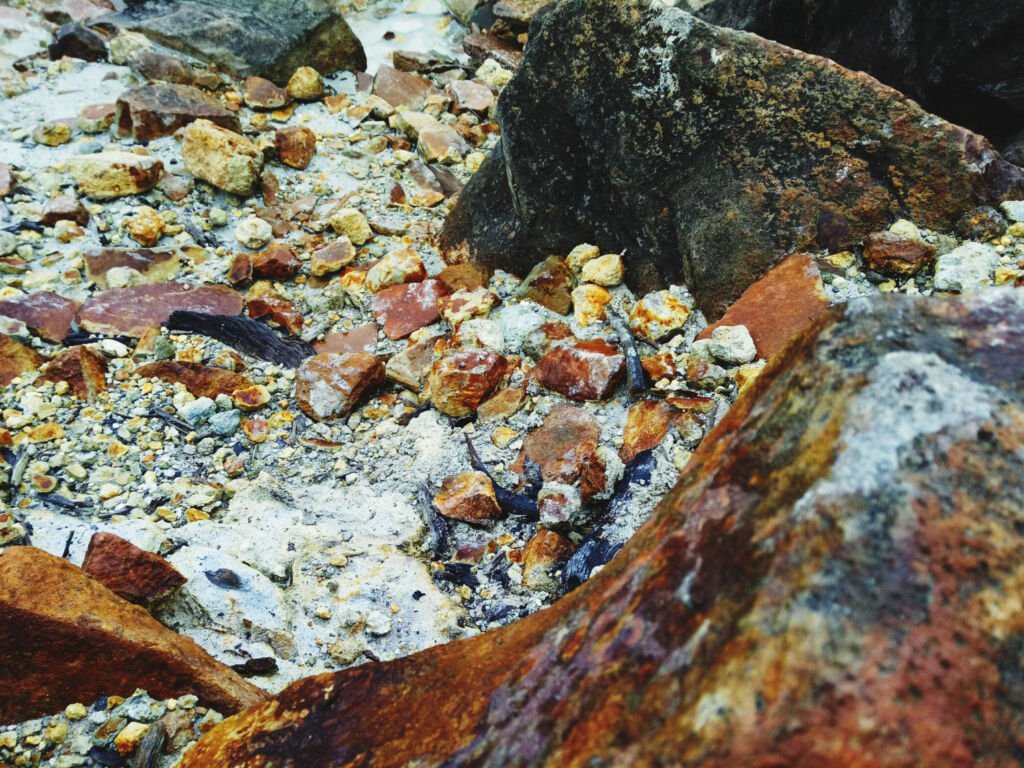
Rusting of Iron:
4Fe (s) + 3O₂ (g) → 2Fe₂O₃ (s)
- Iron (Fe) loses electrons to oxygen (O₂), forming iron oxide (rust)
3. Hydrolysis:
Imagine water as a tiny pair of scissors snipping apart the bonds between atoms within minerals. This process, called hydrolysis, is a key weapon in the alchemist’s arsenal.
For example, consider the majestic granite cliffs. Chemical weathering, through hydrolysis, can break down the feldspar minerals within granite, transforming them into softer clay minerals. This weakens the overall structure of the rock, making it more susceptible to further erosion.
4. Solution:
The alchemist can also be quite thorough. Some minerals, like the sodium chloride that makes up salt deposits, are highly soluble in water. When exposed to water, these minerals dissolve entirely, leaving no solid residue behind. This process, simply called solution, shapes coastlines and forms salt lakes.
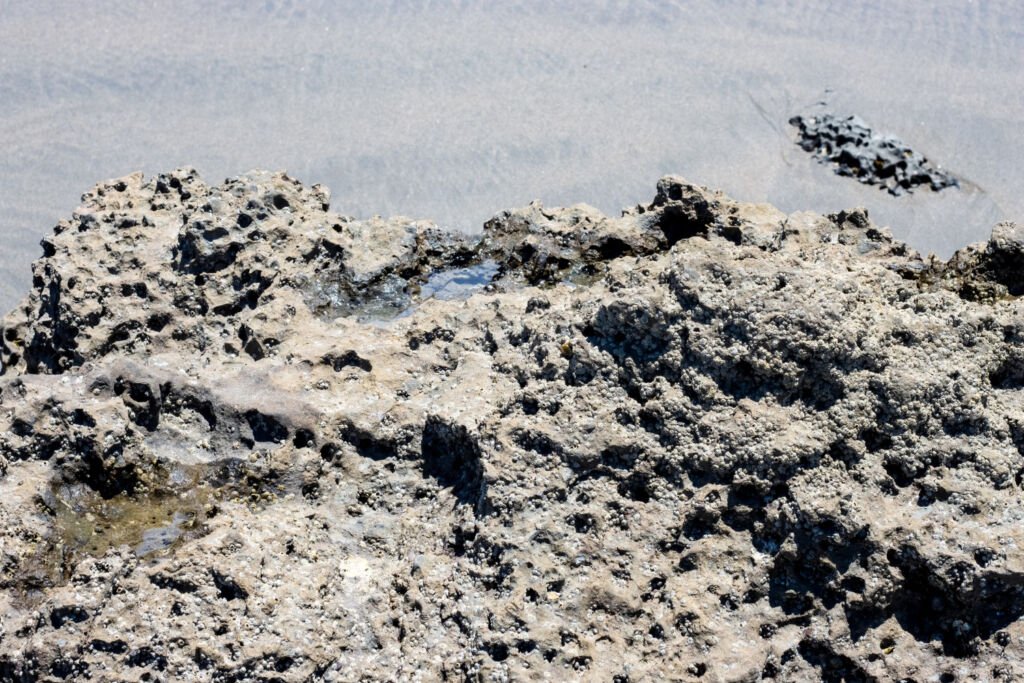
These are just a few examples of how chemical weathering, the alchemist of nature, tirelessly transforms the rocks around us. Through these silent reactions, landscapes are sculpted, soil is formed, and essential nutrients are released for life to flourish.
Where can Chemical Weathering Work Faster?
Chemical weathering, the alchemist of nature, doesn’t work uniformly globally due to factors like cooler temperatures or less frequent rainfall. Certain areas provide the perfect conditions for its transformative magic to work its fastest. Here are some hotspots for chemical weathering –
Humid Tropics: Imagine a warm and wet environment – a recipe for accelerated chemical weathering. Abundant rainfall provides the key ingredient – water. Higher temperatures make chemical reactions proceed faster. Lush rainforests exemplify this; the constant water flow and warm temperatures supercharge the alchemist, leading to the rapid breakdown of rocks and the formation of rich, red-colored soils.
Coastal Regions: Here, the alchemist gets a salty assist. The constant presence of saltwater promotes the breakdown of rocks through the solution and influences the weathering processes at play. Sodium-rich solutions can react with rock minerals, creating unique weathering patterns and coastal landforms like sea stacks and arches.
Areas with Acidic Rain: While not ideal from an environmental standpoint, acidic rain boosts chemical weathering, especially for rocks like limestone and marble. The weak acids in the rain accelerate the dissolving power of the alchemist, leading to faster erosion and the formation of dramatic caves and sinkholes.
Areas with Active Geothermal Features: Imagine hot springs, geysers, and volcanic vents – these geothermal areas are cauldrons for chemical weathering. The combination of hot water, acidic gases, and high pressure creates an extreme environment where the alchemist works overtime, rapidly breaking down rocks and forming unique mineral deposits.
Influence of Chemical Weathering:
Chemical weathering, the alchemist of nature, may be subtle, but its impact is far-reaching. It plays an essential role in shaping the world, influencing everything from the landscapes we admire to the soil that nourishes life.
Landscape Sculptor: Mountains become valleys and rugged cliffs transform into gentle slopes—chemical weathering is a tireless sculptor. Caves, sinkholes, solution pans, etc emerge from the dissolution of limestone, and hoodoos (tall, thin rock spires) rise from differential erosion. The alchemist subtly alters the grandest rock formations.
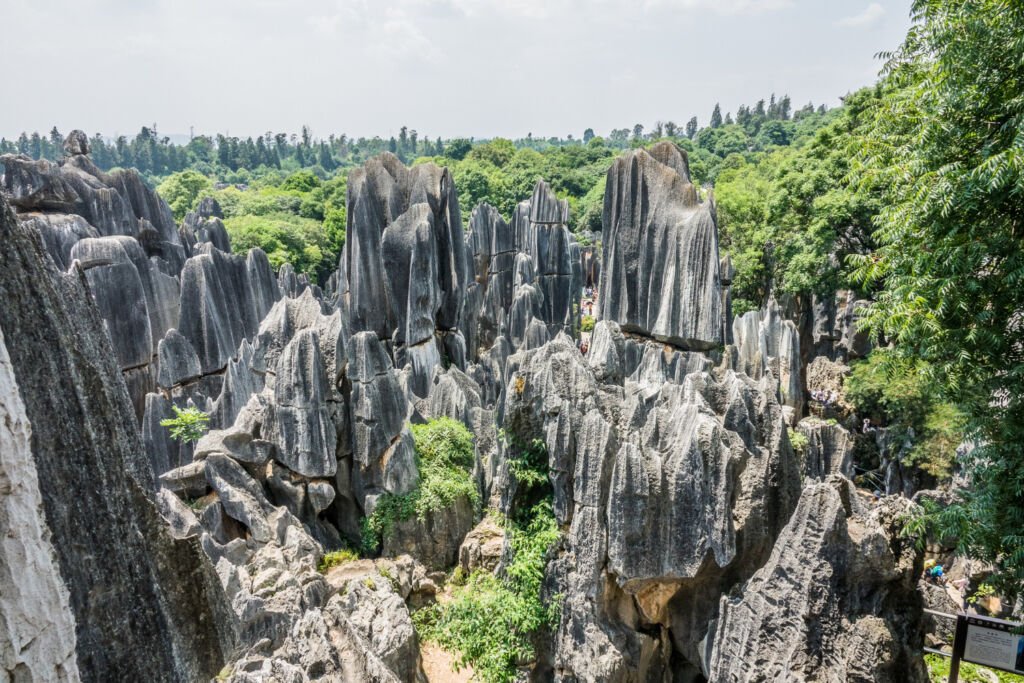
Soil Formation: Without chemical weathering, we wouldn’t have the fertile soil that sustains our ecosystems. Red soil is the very example of soil formed by oxidation. As the alchemist breaks down rocks, it releases vital nutrients like potassium, calcium, and magnesium. These nutrients are essential for plant growth and form the basis of our food chains.
Regulating the Carbon Cycle: Over immense geological time scales, the chemical weathering of silicate rocks plays a crucial role in drawing carbon dioxide out of the atmosphere. This process helps regulate the Earth’s climate, preventing unchecked warming that would make our planet less hospitable.
Shaping Ecosystems: The type of soil formed due to chemical weathering greatly influences what plant life can thrive in an area. Different minerals and chemical compositions create unique niches for specific plants and, by extension, the entire web of life that depends on them.
Revealing the Past: Chemical weathering helps expose fossils and ancient artifacts, providing clues about the history of life and civilizations long past. The chemical alteration of different layers of rock and soil tells scientists stories about changes in climate and environment over time.
Difference between Physical Weathering and Chemical Weathering:
Both physical and chemical weathering play essential roles in shaping our landscapes. Physical weathering breaks rocks down, creating more surface area for chemical weathering to speed up. Chemical weathering alters the minerals within rocks, leading to soil formation and influencing the availability of nutrients for life. But there are a few fundamental differences between these two –
Physical Weathering:
Mechanics: Forces that break rocks into smaller pieces without altering their chemical composition.
Agents: Temperature changes (freeze-thaw cycles), pressure, abrasion (e.g., by wind or water), plant roots, and animal burrowing.
Examples:
- Rocks crack due to water expanding when it freezes inside.
- Windblown sand scouring rock surfaces.
- Tree roots prying apart rocks.
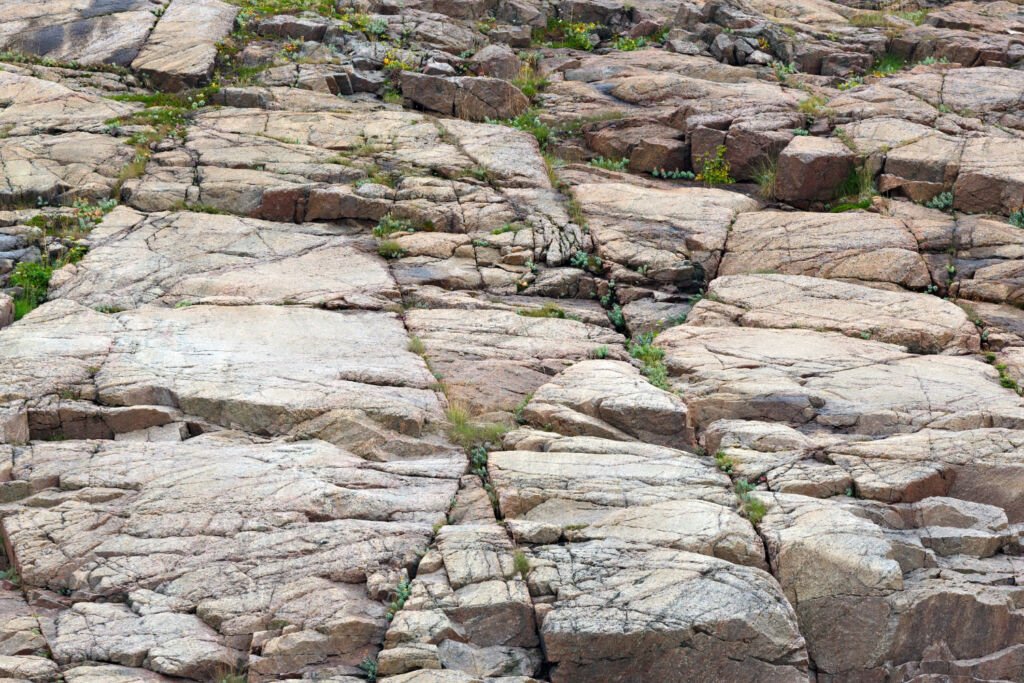
Result: Creates smaller rock fragments and increases surface area for further weathering.
Chemical Weathering:
Mechanics: Changes the chemical makeup of rocks through reactions primarily with water, atmospheric gases, and acids.
Agents: Water, dissolved carbon dioxide (carbonic acid), oxygen, biological acids (from lichens, etc.)
Examples:
- Limestone dissolves in slightly acidic rainwater, forming caves.
- Oxidation of iron-rich minerals causes rusting and weakening of rocks.
- Hydrolysis transforming feldspar in granite into clay
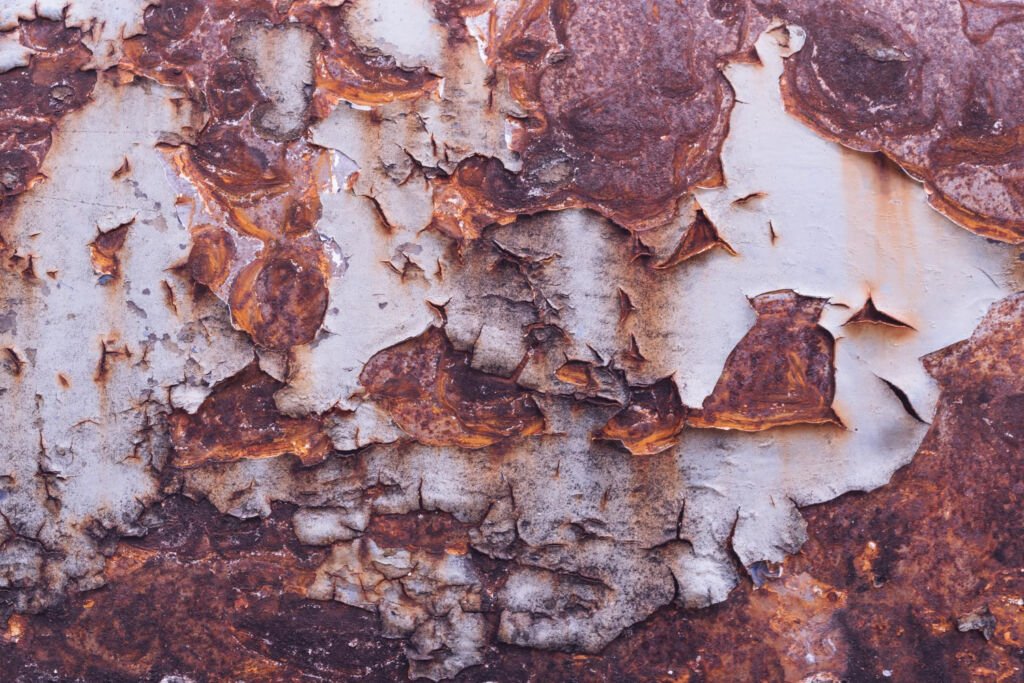
Result: Forms new compounds, releases minerals into solution, weakens and breaks down rocks.
Conclusion:
Chemical weathering, the alchemist of nature, serves as a reminder of the transformative power hidden within ordinary elements like water and air. It’s a quiet process, yet its impact is profound and far-reaching. The next time you see a cracked rock or a rusted boulder, remember it’s not just a sign of decay; it’s evidence of an ongoing and complex dialogue between the Earth and its environment.

